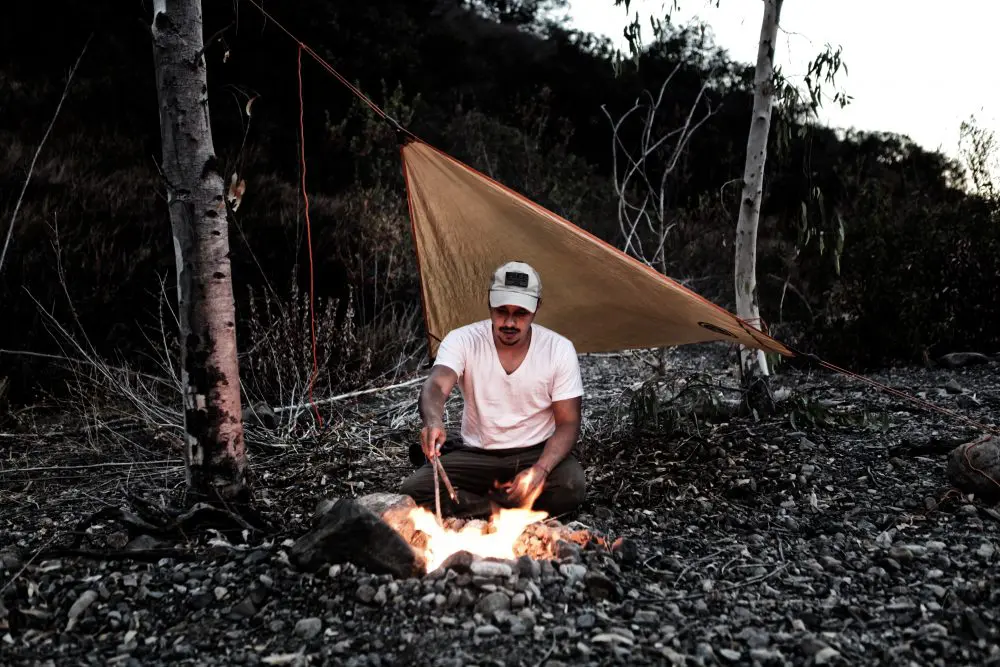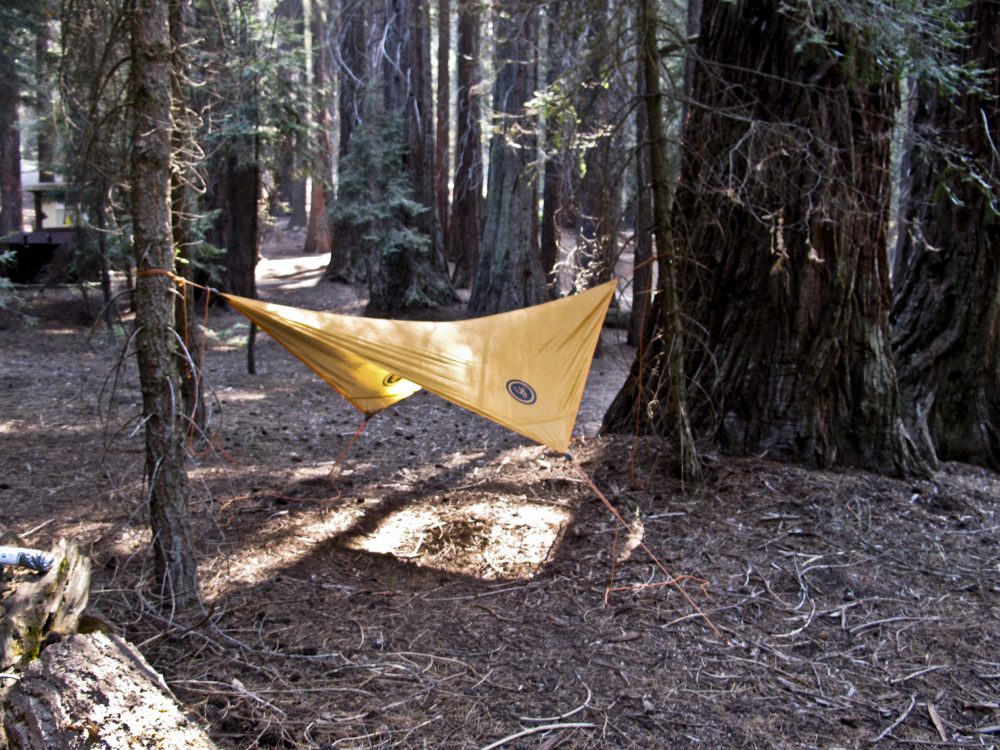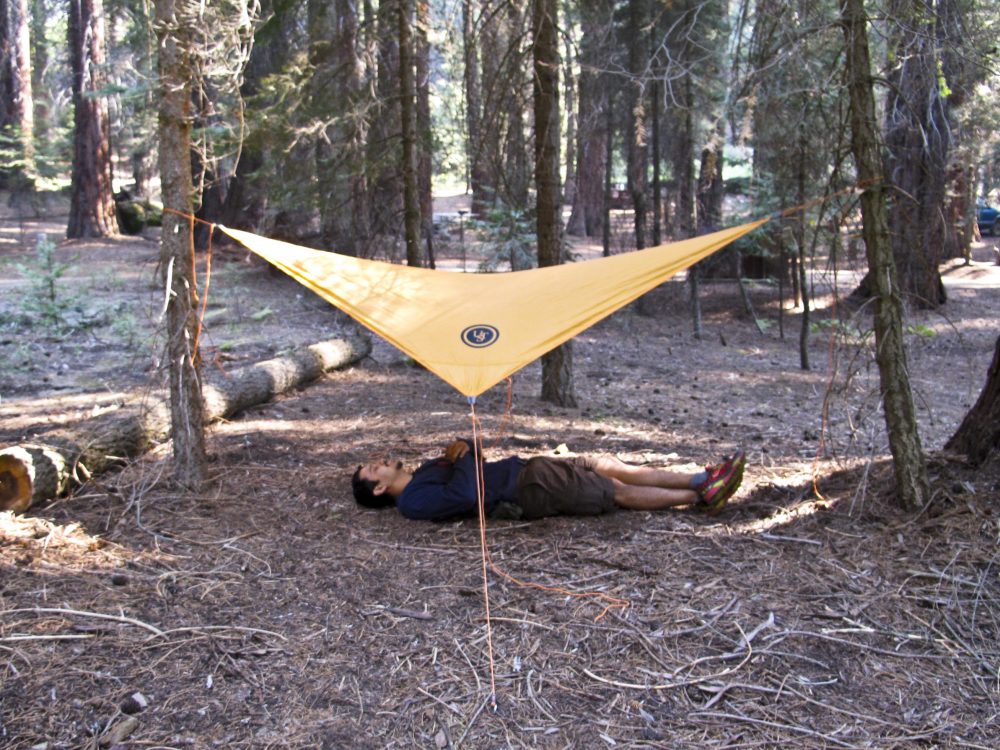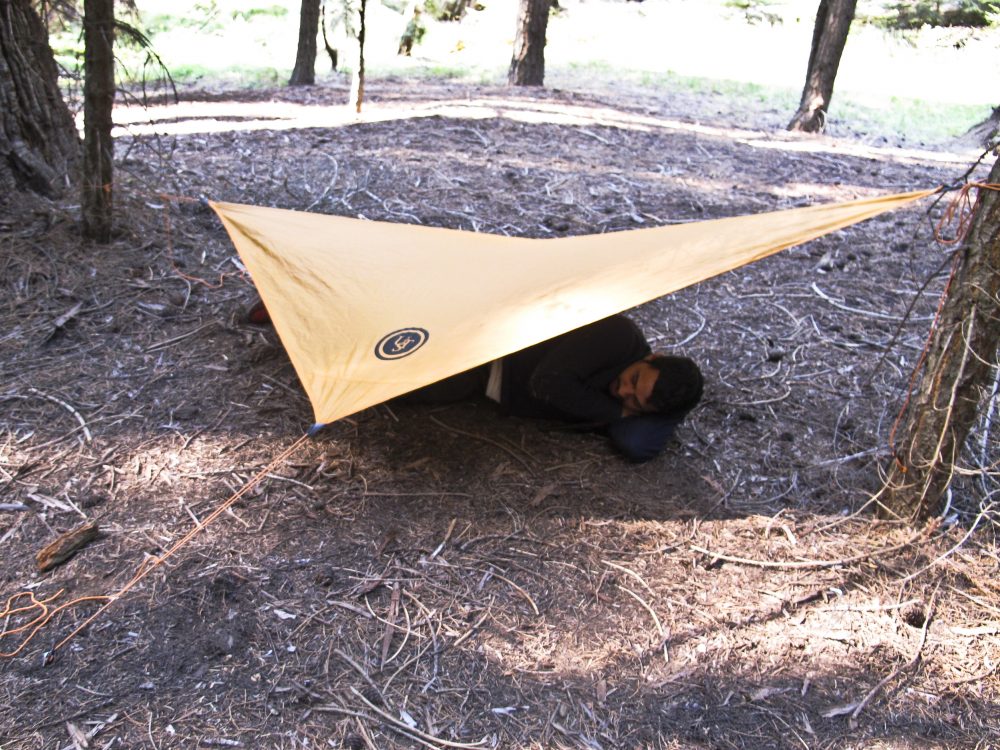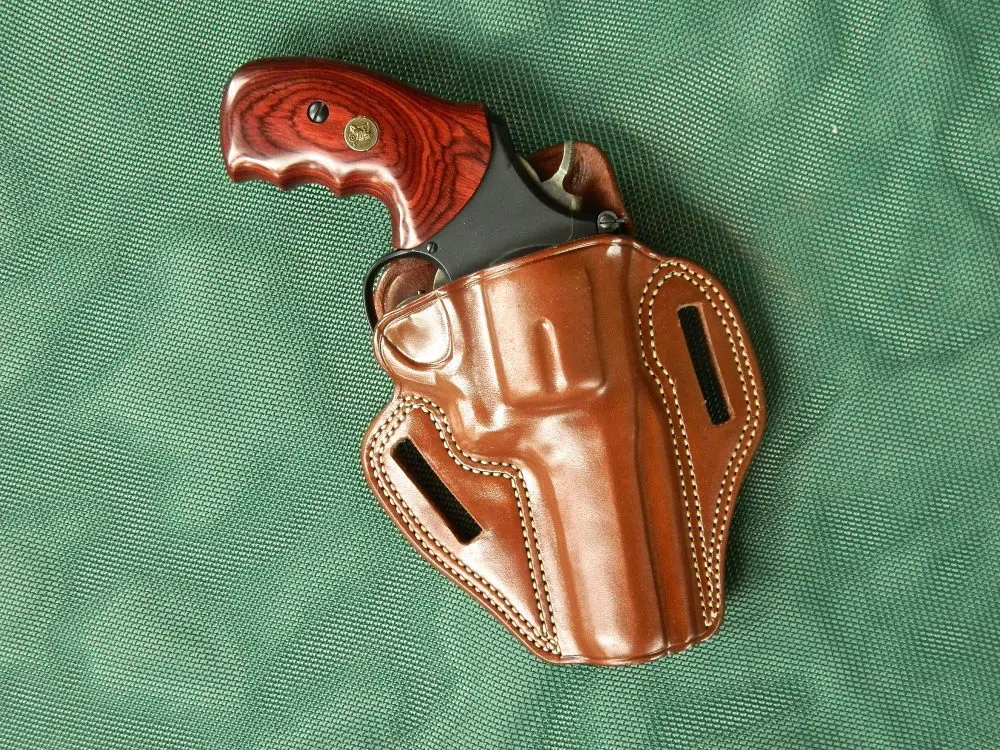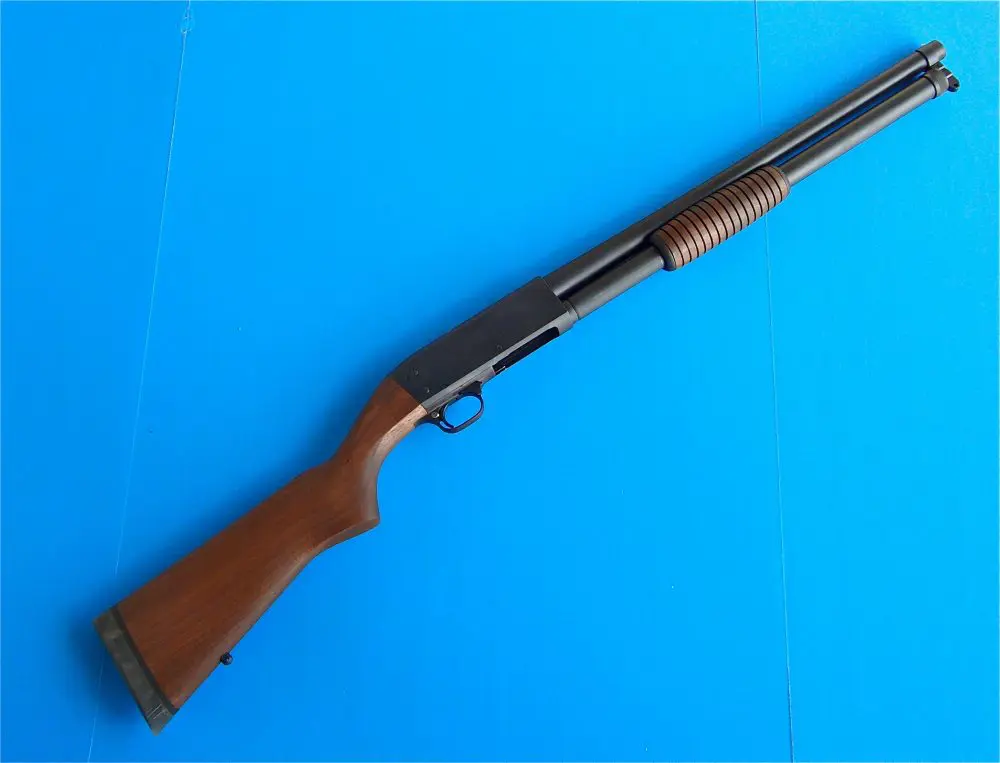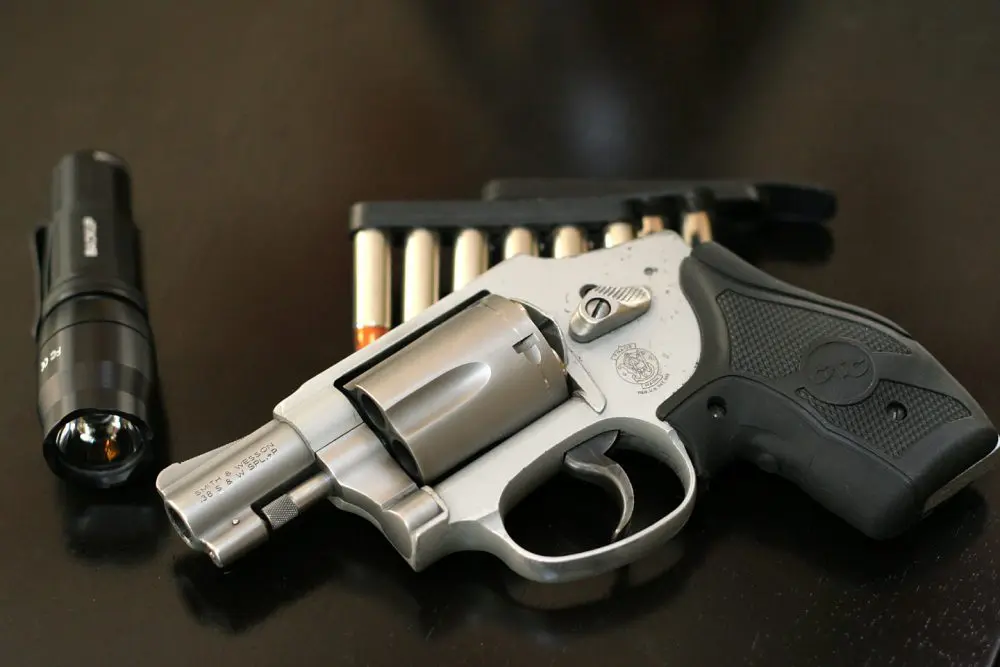In January 2013, 36-year-old Air Force Veteran David Decareaux, his two sons, 8 and 10, and his dog were out hiking on a Missouri trail when the weather unexpectedly turned sour.
After missing the turn back to their lodge, a survival situation started to play out as they always do—a series of cascading events for the ill-equipped. Hours earlier, a passerby had asked if they needed a ride, and Decareaux declined. The temperature sank from 60 degrees to the 20s as the day progressed. Clad only in light clothing, the three had no protection from the rain that had started to fall. Decareaux was declared dead at the scene, and his sons died later at the hospital. The dog was found alive next to his owner.
One thing we stress in our survival school is to always carry a means of cover or shelter. It doesn’t have to be fancy and we actually prefer something minimalist like a tarp. Even a space blanket can do, though they tend to fall apart quickly if you are not extremely careful. Ultimate Survival Technologies (UST) has finally answered our survival prayers by blending two great ideas—the space blanket and a durable, lightweight tarp—into the B.A.S.E. All Weather Tarp. If they had simply kept dry, it’s likely the Decareauxs would be alive today.
Author tests tarp for heat reflectivity
Table of Contents
THE TARP
I contacted Pete Simmons at UST and he gave me the lowdown: “We try to design our multi-use products so that they are of excellent quality and affordable to most. We realize other companies manufacture similar products and we try to set ourselves apart with a better quality product at a reasonable price point.”
The B.A.S.E. All Weather Tarp is bright orange on top and has an aluminized, flame-retardant lining on the underside. It is made of tightly woven polyester that sheds water. It measures eight feet by six feet when stretched out and is in the shape of a diamond. I like the diamond fly design, not just because it’s handy for pitching different ways, but there’s also an inherent “cool” quality about how it looks.
Simmons was right about the price. I got mine at an Eddie Bauer Outlet for $16. It’s a single-person-use tarp, which is great for the average day hiker or minimalist camper. It includes six guy lines with line tighteners and six stakes. The tarp has two grommets on the eight-foot-long sides and four loops made of high-quality woven nylon strapping that are double stitched to the tarp on each corner. I have pulled them as tight as I possibly could with no separation.
Pitched high for a nice shaded campsite
MULTI-USE
Uses abound for the lowly tarp. I don’t take anything into the woods with me that doesn’t have three or more purposes. Tarps protect against three of the heat loss mechanisms: convection, conduction, and radiation. Wrap it around you to reflect your body heat, use it as a ground cloth to protect yourself from the cold ground, block the wind by pitching it low, or pitch it high to block the sun and give you shade.
Not every use has to be geared toward survival—use it as a ground cloth to eat lunch on. I personally like how bright it is. This tarp serves as an excellent signaling device. The bright orange stands out against anything in nature, and the reflective underside can work as a perfect ground-to-air signal.
I can think of almost 100 uses for this tarp, from collecting water to using it as a backpack or clothing. But where I think it truly shines is in its intended purpose as an improvised shelter when teamed with a fire.
Author demonstrates how big the tarp is
PITCHING IT
On their website, UST says the tarp weighs 14.8 ounces, but that includes six stakes at 23 grams each, six guy lines at 12 grams, and the pack it comes in. By my calculations, the tarp alone is just shy of seven ounces. This makes it a great lightweight option, and there’s no reason not to carry it. I ditched two guy lines and two stakes. Since it pitches perfectly with the four attachment points, I saw no need for the extras. This cut the weight down to 12 ounces.
I like the diamond design because of the options for pitching it. I pitched it high for a nice shaded area to hang out under, low (mimicking an A-frame) for an enclosed shelter from the elements, and steep for a snow-proof shelter. Any of these configurations would go great with a fire for a warm shelter that I think can keep a person warm in sub-zero temperatures!
Tarp can be pitched low to create an enclosed shelter. Author kept one side pitched higher for storage and to accommodate a fire.
Temperatures rarely go that low where I live, but I tested the tarp with a fire anyway. I made a small fire about two feet away from the tarp. When the sun was almost fully down, it was 65 degrees outside. I tested the temperature inside the tarp and it was a warm 80 degrees. Just from a small fire, the area between the fire and the tarp was 15 degrees warmer than the outside temp.
I have tried this in the Rocky Mountains with tarps that had no reflectivity to them and could get almost no residual heat on the side farthest from the fire. The aluminized polyester really does make a life-saving difference. If one teamed this with a hard-wood body-length fire, they’d be toasty and dry.
This tarp is pure gold. I have been dreaming of a product like this for some time—even to the point of wanting to invent it myself. UST saved me the hard work and money. It can be found at various retailers and goes for $29.95, though as my experience shows, shopping around for it can save you a significant percentage.
SOURCE:
Ultimate Survival Technologies/Revere Supply Company
(877) 738-3738
www.ultimatesurvivaltech.com
